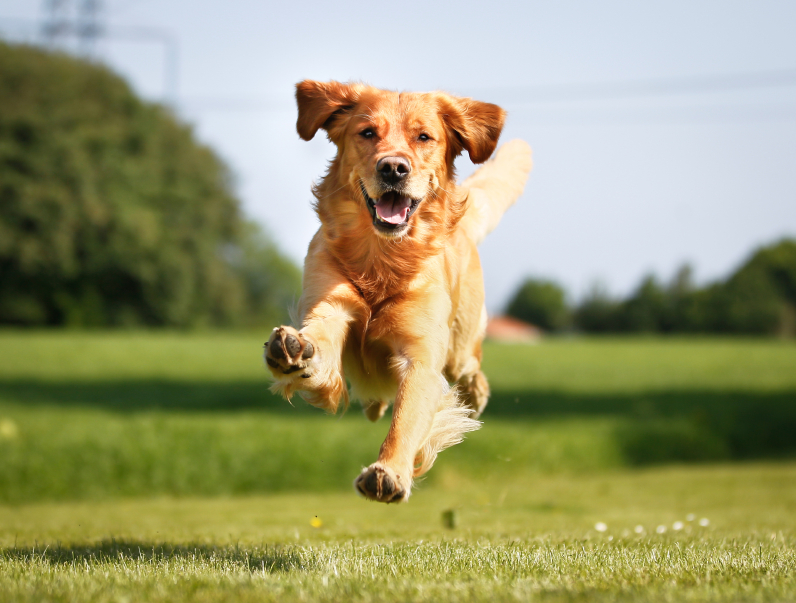
by Shelagh Hislop | Jan 17, 2020 | news
ARTHRITIS is a degenerative disease of joints that usually results through time and from chronic wear and tear. Arthritis is the number one cause of chronic pain in dogs and cats.
A few questions you might think about if you have an older dog:
- Is your pet having difficulty getting up and down stairs or in and out of the car?
- Is he/she stiff when getting up after lying down?
- Is your pet more irritable than usual or restless when sleeping?
If you have a cat:
- Is he/she reluctant to jump up on to furniture?
- Does your cat avoid being picked up?
- Has there been a change in response to grooming?
These are all potential signs of arthritis.
FIRST LINE OF DEFENSE
- Weight Management – nothing earth-shattering here; keeping your pet’s body weight lean alleviates excess pressure on their joints.
- Routine Controlled Exercise – this helps maintain as much muscle mass to help support the joints. Swimming is an excellent low impact exercise.
- Glucosamine and Chondroitin Sulfate – cartilage components harvested from sea mollusks provide basic building blocks helpful to repair damaged cartilage. Expect 1-2 months before noticeable improvement.
- Omega 3 Fatty Acids – typically from fish oils; these have great anti-inflammatory properties. Diets that contain Omega 3’s tend to be more effective than oral supplements. A good example of a diet rich in Omega 3 Fatty Acid is the J/D diet from Hills.
THE NEXT STEP (more advanced arthritis):
- Cartrophen Injections – typically this is a series of 4 subcutaneous injections given at weekly intervals. Cartrophen is a drug in its own class (disease modifying osteoarthritis drug). It is an injectable source of the cartilage component polysulfated glycosamino glycan (PSGAG). Not only do PSGAGs provide a building block for cartilage they also inhibit harmful enzymes involving joint cartilage, stimulate cartilage repair, and increase joint lubrication.
- NSAIDS – included in this group are Metacam, Rimadyl, Deramaxx. They act by suppressing inflammatory biochemicals that lead to pain and also cartilage damage. NSAIDs are not without potential side effects but risk versus benefits will be discussed with you if they are a consideration in improving your pet’s quality of life. DO NOT USE HUMAN NSAIDS ON PETS
- Analgesics – other analgesics that are strictly analgesics and do not modify inflammation in the joint include Tramadol and Gabapentin.
- Acupuncture, Chiropractic Adjustments, Message and Physiotherapy – can also be helpful
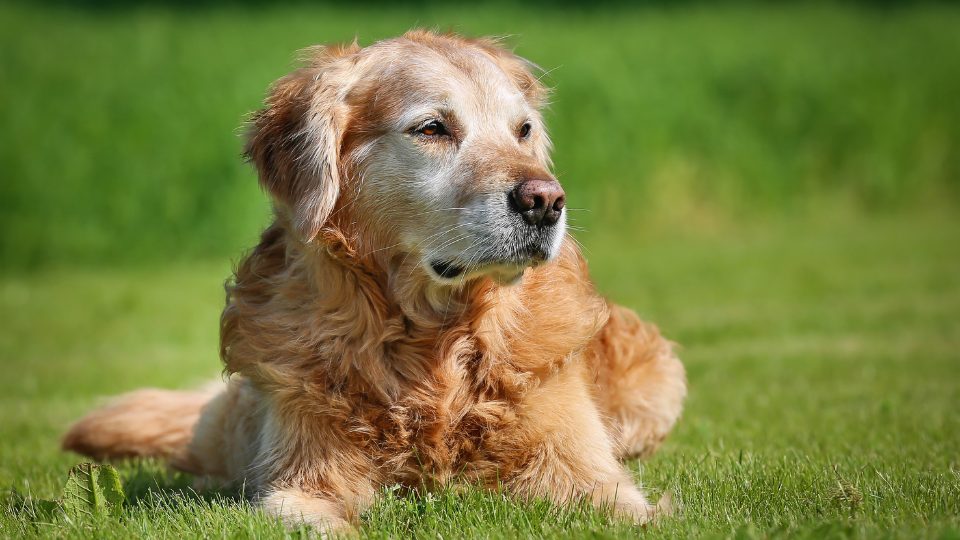
by Shelagh Hislop | Nov 15, 2019 | news
Cognitive Dysfunction – Senility in Geriatric Pets
As our pets age, our bond with them grows deeper and more intense. We’ve grown to love them more over the years and they are more dependent on our understanding and kindness as they deal with the challenges that the elderly face.
One of the issues described commonly in geriatric pets is “senility” (our medical-ese for this is “cognitive dysfunction”).
Examples are:
The old dog that walks out to the yard and stops, staring into space. He doesn’t appear to remember why he’s there. (Or perhaps he does this in the middle of the livingroom.) He only stares off and stands there a while.
Some old dogs get stuck in a corner or behind the couch and seem to be incapable of getting out of their simple predicament.
There is also the old dog who is agitated and restless in the middle of the night – waking to ask to go outside or just waking – pacing, panting and appearing anxious.
And there are many an elderly cat that yowls in the night. This nocturnal vocalization sounds alarming, but there is nothing that seems to be wrong. (Is she hallucinating? Is she dreaming?) Sometimes she has an old sock or something that she’s carrying around while she makes that mournful sound.
If you have a pet like this, you are not alone. In one way, you’re fortunate to have a pet that has grown with you this long to get to this age, but on the other hand, it can sometimes be difficult to deal with.
A general health examination is a first step to see if there is anything that is treatable. Bloodwork and urinalysis can point to (or rule out) abnormalities in organ function that could cause behavioral changes in an elderly pet. Examples are: diabetes, Cushing’s syndrome, kidney disease, bladder infections, hyperthyroidism in old kitties, and many other possibilities.
Hearing loss is common in this age group. It can explain a lot of the geriatric patient’s seeming lack of awareness. Vision loss sometimes plays a role in this as well. Rarely are these conditions reversible, but getting a checkup will determine if anything can be done. Sometimes an eye condition can be treated and some forms of cataracts can be considered for surgical correction (if the patient is doing well otherwise).
For many other age-related cognitive change examples, there is no easy fix. Aging takes its toll on the brain, just as it does on all the other major organs. But sometimes your veterinarian can have helpful suggestions at this emotional part of your pet’s life.
Anti-inflammatory medication can be discussed in cases that may have behaviors related to pain. And we don’t often know for sure that the pet is in pain – but a trial of pain medication can sometimes answer that question. WARNING: Don’t try these medications without veterinary consultation regarding your pet’s specific case, which product is applicable and the dosage.
Decreasing stress in elderly pets is helpful too. Keeping schedules consistent and having predictable pattern of feedings, outings, and bedtimes can help the old dog or cat. Sometimes this isn’t easy as our families evolve and “life happens”. There are some products available – involving specialized pheromones in a spray or diffuser form – that can have a de-stressing effect on anxious dogs & cats. If it sounds like a reasonable thing to try, your vet may be able to suggest a trial with this type of product.
Free radical scavenging supplements (anti-oxidants) may help the brain deal with some of the inflammatory chemicals and free radicals liberated over time. These products can help to soothe some of the effects of aging at the cellular level.
Casein-containing supplements or foods may be helpful. This milk protein is known to have a calming effect on the brain. Also, there’s an amino acid supplement that has been found to influence and decrease stress signals in the brain.
Sedatives can be used intermittently – and in more severe cases, they are sometimes required ongoing.
Mainly, we want the best quality of life for our aging pets. They are so special to us throughout their lives, and seem to need us even more at this time.

by Shelagh Hislop | Jun 1, 2019 | news
DOGS LEFT IN THE CAR:
There’s a ton of online information and many warnings about leaving dogs (or anyone!) in the car on hot days. But still people keep doing it. Perhaps these people who continue to do so are not online. So please spread the word to all your friends and relatives about how dangerous and inhumane this is. Even with the windows open a bit, the car can get much hotter than the outdoor temperature and dogs can experience great distress and potentially life threatening harm via heat stroke. Keep in mind that dogs have to pant to decrease their body temperature. They don’t have the sweat glands than people have. Tell everyone: leave the dogs at home on warm days — please!
HOT, SORE FEET:
Dogs feet are tough — but many people forget that they can still become traumatized by excessive heat from sun-baked asphalt or from excessive running on concrete, gravel, or or other surfaces. Dogs’ feet are prone to injuries and discomfort from these surfaces during high temperatures and extreme exercise. They’re often so devoted to their owner and the fun, that they will run through pain to keep up. Please remember to keep them cool (keep feet off hot surfaces) and prevent them from overdoing it — especially in the hot weather.
HYDRATION:
We always remember to hydrate ourselves, because we can reach for a beverage whenever we wish. Dogs can’t communicate when they are thirsty. If it’s very warm and they’re panting a lot to cool their body temperature, they will need extra hydration — even more so if they are being active. Please remember to pack water for your dog whenever you’re out and about in the summer weather.
SAFETY IN MOVING VEHICLES:
Finally, hot weather seems to encourage more incidents of dogs riding in the back of trucks (or hanging out of windows to stay cool). Veterinarians see many patients who are very badly injured due to accidents that occur in these circumstances. Dogs fall out of the back of trucks and fall out of open windows! And often those injuries are devastating (for the patient, owner & vet!) Please keep your pets safe and secure in a moving vehicle (or leave them safe and cool at home).
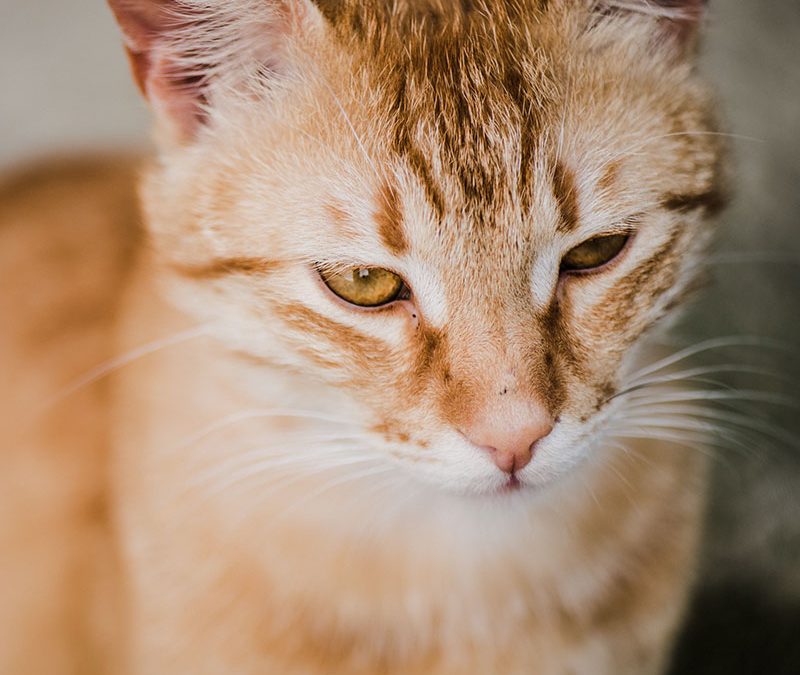
by Shelagh Hislop | Nov 17, 2018 | news
Hyperthyroidism is the most common endocrinopathy (hormonal disease) of cats. It mainly happens in older kitties (usually greater than 10 years of age).
Hyperthyroidism means excessive thyroid activity. It causes a sustained high metabolic state produced by thyroid nodules secreting too much thyroid hormone. 98% of these nodules are benign, but this very high metabolic rate causes symptoms.
- The most typical scenario is a cat that is losing weight despite good appetite.
- Another common finding on physical exam is a very rapid heart rate with the presence of a heart murmur.
- Other signs may include intermittent vomiting, increased drinking, diarrhea, behaviour change and poor hair coat.
Diagnosis is made via a blood test which shows elevated thyroid level.
The 3 most common ways that we can treat hyperthyroidism include:
- Methimazole – a medication which blocks the pathway that leads to the formation of thyroid hormone. This medication comes in the form of a tablet or a transdermal gel that is applied to the inner part of the ear.
- Y/D Diet – is a special diet from Hill’s. It is an iodine-deficient diet that is effective in lowering thyroid hormone levels. This diet is only suitable for indoor cats, and the diet must be very strictly adhered to.
- Radioactive Iodine Injection – this is a potential cure for hyperthyroid cats but does require a 1 week stay at a referral clinic in Victoria or in the Lower Mainland. The radioactive iodine is absorbed into and destroys the problematic thyroid tissue. It is curative in 98 – 99% of cats.
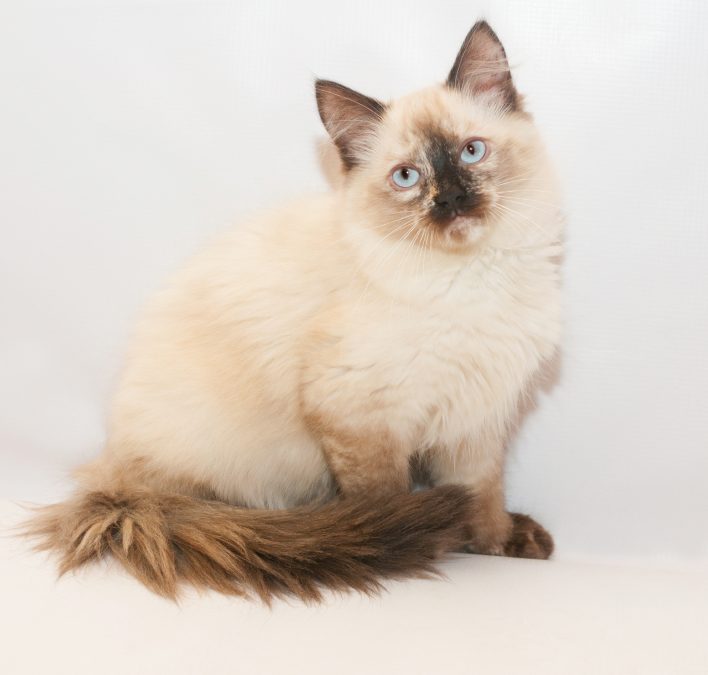
by Shelagh Hislop | Jul 17, 2018 | news
WHAT IS IT? HOW DO I HELP PREVENT IT FROM HAPPENING?
What is FLUTD? Feline lower urinary tract disease (FLUTD) refers to a group of conditions that affect the bladder and urethra of cats. Cats with FLUTD display one or more of these signs.
- Urinate frequently and strain when they urinate.
- Urinate outside of the litter box and in unusual areas.
- Excessively lick at their genital area.
- Have blood in their urine.
WHY DOES THIS HAPPEN?
There are several causes of FLUTD but the most common are as follows:
- Feline Idiopathic Cystitis: When everything else is ruled out, a diagnosis of Feline Idiopathic Cystitis is made. It is, by far, the most common cause of FLUTD, but unfortunately the least understood. (“Idiopathic” means “cause unknown”.) It is typically a recurrent condition. The underlying cause of Feline Idiopathic Cystits is unknown, but it has been shown to be associated with stress. Environmental changes, multiple pets, changes in food and feeding schedules are typical stressors in cats.
- Urinary Tract Infections: Urinary Tract Infections are in fact not a common cause of FLUTD (especially in younger cats), but a urinalysis can determine whether or not this is the cause of FLUTD. Antibiotics is one common treatment for this infection.
- Urinary Stones: Collections of minerals that form stones in the bladder and/or urethra. X-rays or ultrasound can be used to look for stones. Surgery is often required to remove these stones, however special diets can occasionally dissolve them. Dietary changes are often recommended to prevent recurrence.
- Urethral Blockage: A true emergency; urethral blockage occurs when the urethra becomes partially or totally blocked. Stones or mucous plugs are frequently the cause of urethral blockage. Treatment requires urethral catheterization and hospitalization on IV fluids.
- Tumors/Cancer: Cancer of the urinary tract is another less common, but potential cause of FLUTD.
WHAT CAN I DO TO PREVENT FLUTD?
- Keep your kitty hydrated! Plenty of access to fresh water is very important. Some cats enjoy water fountains. Canned food can also help with this.
- Multiple, regularly cleaned litter boxes (one more litter box than the total number of cats in the household is recommended). Litter boxes should also be kept in quiet and safe environments.
- Minimize change in your kitty’s routine.
- Play with your cat! Provide scratching posts, kitty condos, window perches- these will all enrich your cat’s environment.
- Keep your cat lean! Obesity is a risk factor for FLUTD.
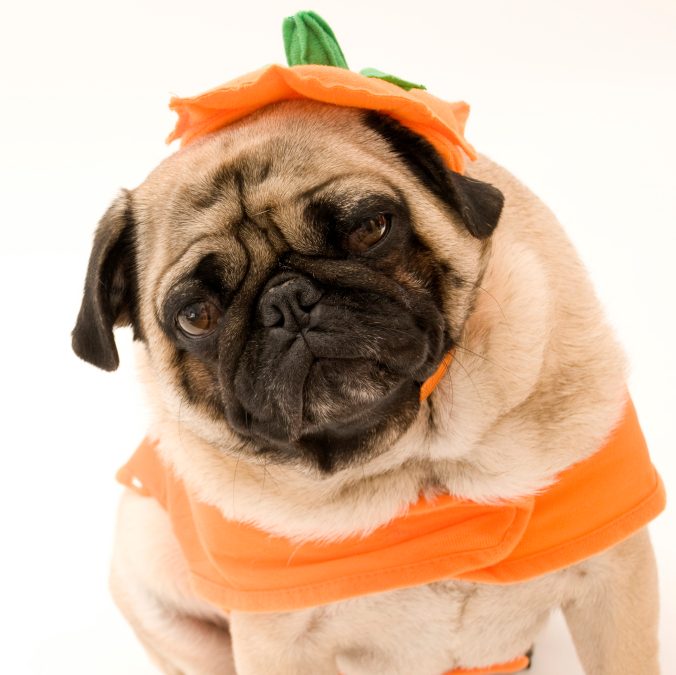
by Shelagh Hislop | Oct 17, 2017 | news
Halloween is great fun for most of us.
Kids and grown-ups alike find it a time for the imagination to let loose & fantastical characters to be brought to life. It’s a time of hilarious costumes, bright lights and noise – (and candy!) We humans might have fun with this, but it’s often a confusing time for animals. Most pets are alarmed by the doorbell repeatedly ringing and visitors endlessly appearing, but some can even be intimidated by the costumes as well. Who really knows what our dogs and cats think of all this?But we do know that those who are frightened can act in ways that are unpredictable.
Problems occur when a pet is very anxious and pacing, panting and drooling all night and can’t settle down. Even worse, some pets get out and run away (or are injured by vehicles or other means). Others who may feel confused and trapped may act uncharacteristically aggressive. So – it is best to keep everyone safe. Keeping dogs and cats indoors during the busy hours of children Trick-or-Treating is ideal.
If you can keep your pet in a quiet space away from all the excitement at the front door, that would be the best plan. If they are being closed in a room, make sure they have what they need for the period of time you plan to contain them, and be sure to check on them frequently (if a family member isn’t able to be with them during this time). Fireworks are a particular problem for our nervous pets. Some pets might even need sedation to get through this scary night safely.
This is something you could talk to your veterinarian about if you feel it’s necessary. And don’t let your pets get into the candy afterwards. Chocolate can be toxic and all that sugar and fat can cause other upsets to the system. (It’s not always that great for us in large quantities either.) Being aware of the confusion your pet might be feeling helps us take better care of them during stressful times like Halloween night. Have a fun and safe HAPPY HALLOWEEN







Recent Comments